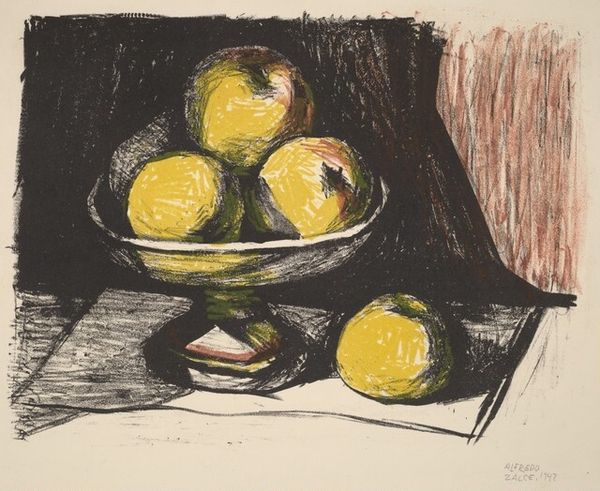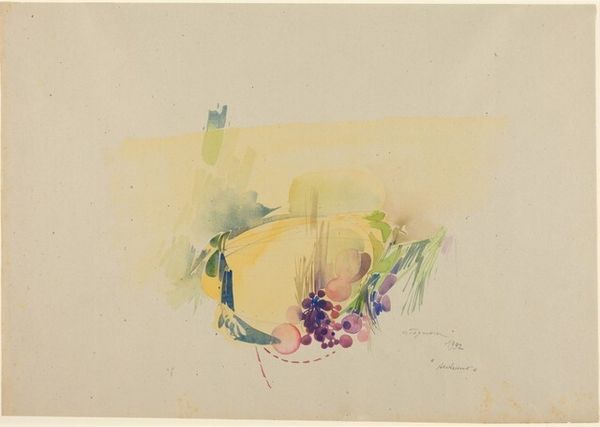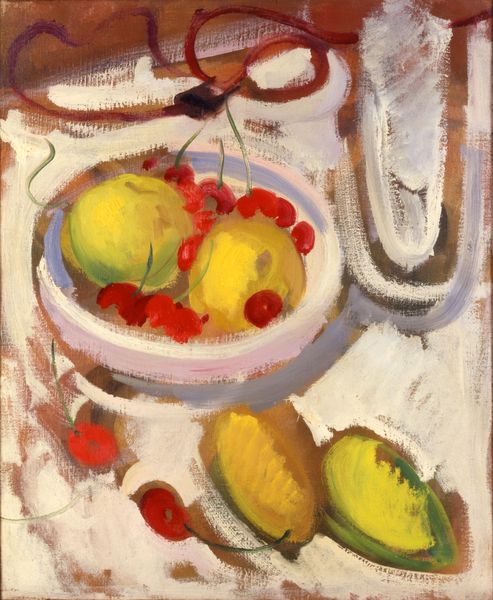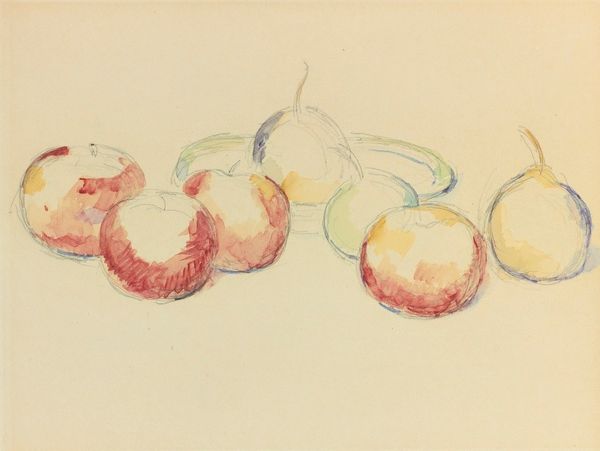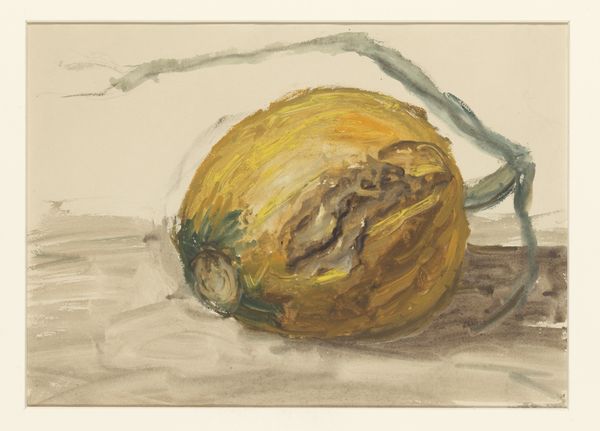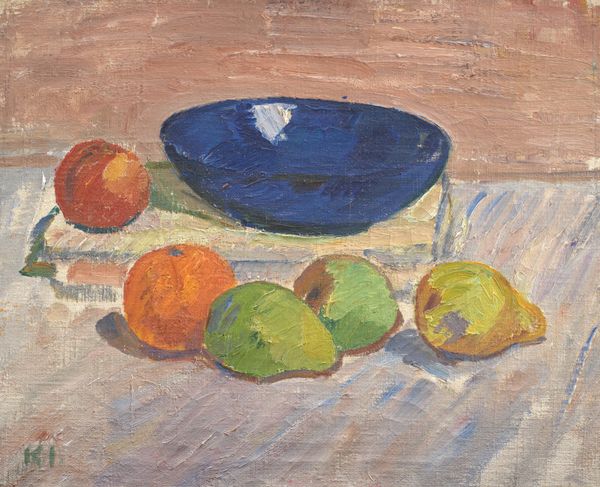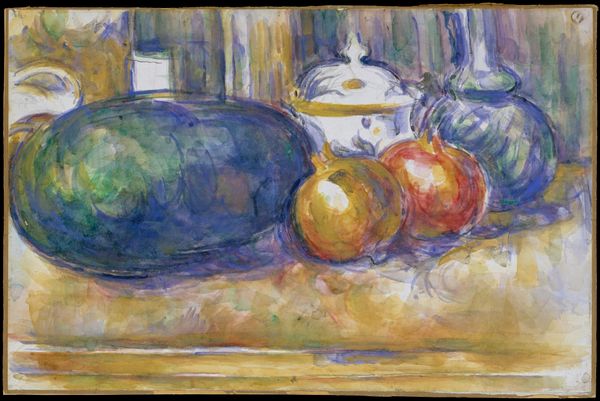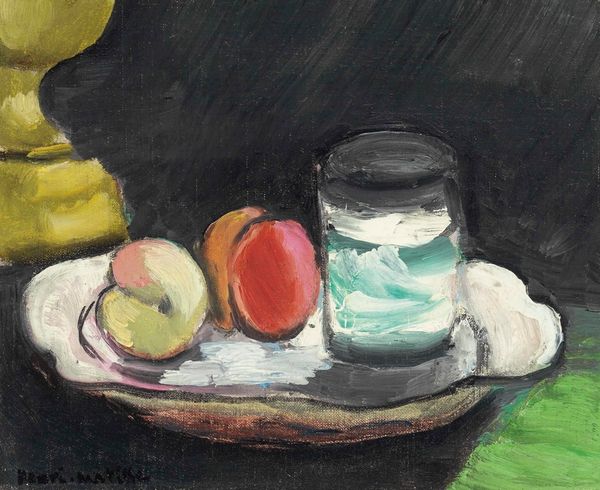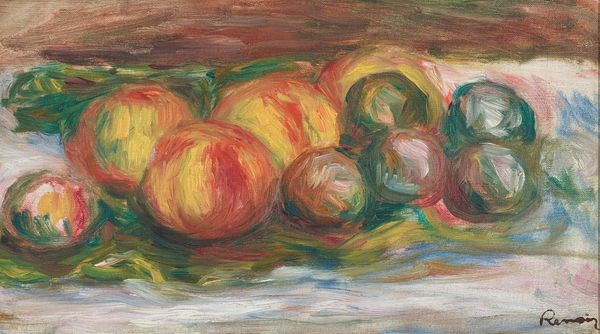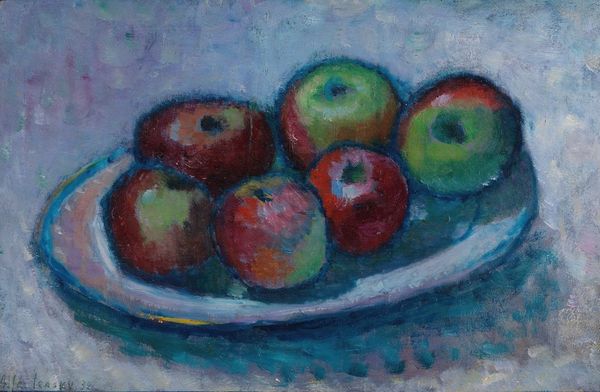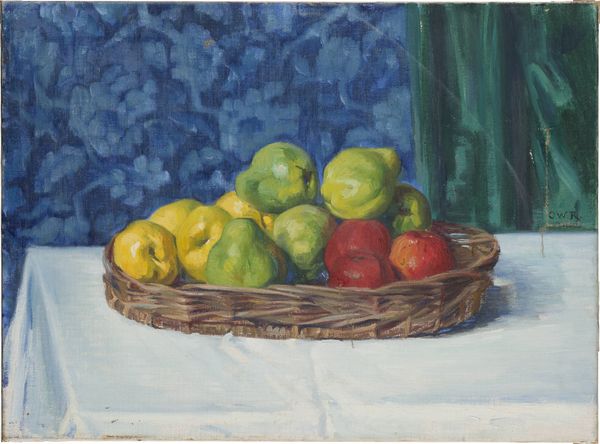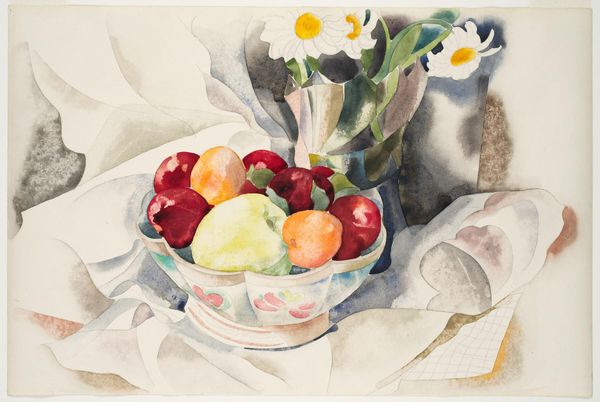
drawing, paper, pastel
#
drawing
#
still-life-photography
#
water colours
#
possibly oil pastel
#
paper
#
pastel chalk drawing
#
expressionism
#
pastel
Copyright: Public Domain
Editor: Here we have August Macke’s “Apples and Lemons,” created around 1909 or 1910. It's a pastel drawing on paper, currently at the Städel Museum. It's got this soft, almost dreamlike quality. What's your take on it? Curator: Dreamlike is a good starting point. I think this piece can be read through the lens of early 20th-century anxieties surrounding industrialization and the changing roles of women in society. The fruit, domestic and traditionally feminine symbols, are rendered in a style that almost dissolves their forms, suggesting a disruption of the familiar. How does this pastel medium inform the narrative? Editor: It's delicate, not bold like oils could be. Almost fleeting? Curator: Exactly. Macke's choice of pastel becomes crucial. Consider that pastel, often associated with 'feminine' artistry and amateurism, is here employed to depict a subject – fruit – traditionally aligned with domesticity. Is this merely an exercise in aesthetics, or is Macke making a quiet commentary on the perceived limitations placed upon both women and artistic mediums during his time? Does it perhaps signal his wish to embrace alternate approaches to creation? Editor: That makes me think about how expressionism challenged traditional artistic constraints. So, he might be challenging social constraints too? Curator: Precisely. The Expressionists sought to disrupt academic norms in favour of raw, emotional expression. What if we understand Macke's blurred lines and unconventional color palette as a way to express disillusionment with rigid societal expectations, similar to how female artists felt sidelined? Editor: So, the seemingly simple still life opens up into a commentary about gender and art… I hadn’t considered that before! Curator: Art is often about asking these difficult questions. Editor: That's definitely given me a fresh perspective, making me think about art as a form of societal reflection!
Comments
No comments
Be the first to comment and join the conversation on the ultimate creative platform.
